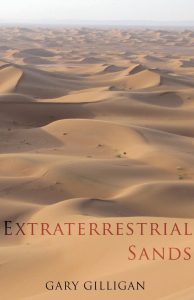Sacred Chaos, Sacred Words
Sacred hieroglyphs record ‘sacred’ planetary chaos
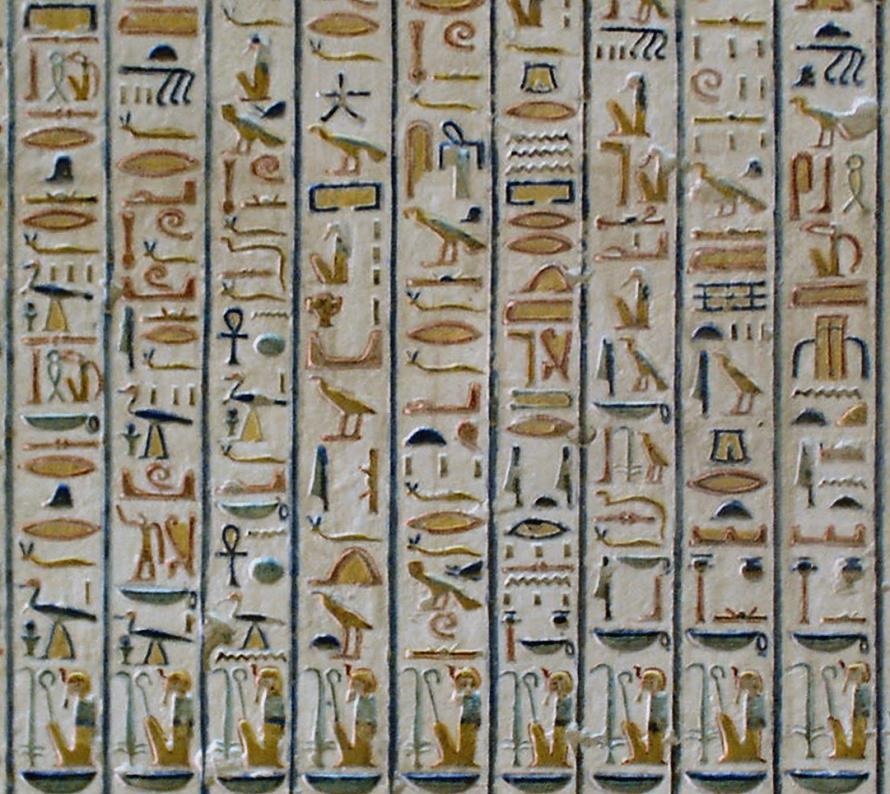
Read any book or watch any TV documentary on ancient Egypt, or visit the Egyptian section at many of the world’s museums (or even take a trip to Egypt itself), you will immediately become aware of the ancient Egyptian system of writing – hieroglyphs.
The word hieroglyph is Greek for sacred carvings, referred to by the Egyptians as mdju netjer meaning ‘words of the gods.’ Hieroglyphs cover almost every tomb, temple and monument along the Nile Valley. Accompanying the hieroglyphs we are presented with many sacred and reoccurring scenes such as those depicting the king in the act of ‘smiting the enemy’ or ‘offering’ scenes where the pharaoh is shown making ritual offerings to Egypt’s sky gods.
In my book (An Ancient World in Chaos) I make the very simple (albeit outrageous) proposal that the hieroglyphs and the divine images were considered ‘sacred’ because they are all to do with cosmic chaos and events above – they have little, if anything, to do with events here on earth. I literally take the sacred scenes and inscriptions and transfer them up above where they belong. With this mindset, let us take a look at this virtual uncorrupted source of information to see just how this ties in with the GKS.
With the following inscriptions I ask the very basic question – are we dealing with celestial bodies or mere humans? As will become apparent, we are most definitely dealing with the former; the ancient Egyptians are clearly referring to celestial bodies in the form of divine kings and queens that graced our skies only a few thousand years ago. That said I’ll leave it for you to decide. The following ‘sacred words’ are purely random. The list will be extended as and when time permits. You will occasionally encounter dashes thus ————— it denotes undecipherable text.
The Recording of celestial events
Tutankhamun (Mars)
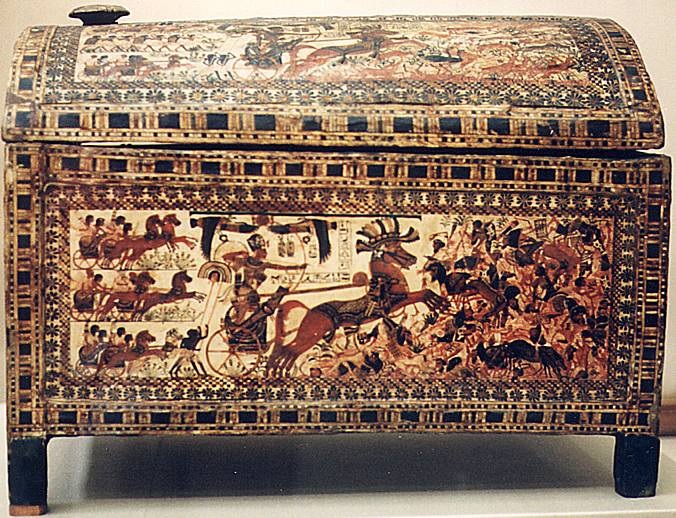
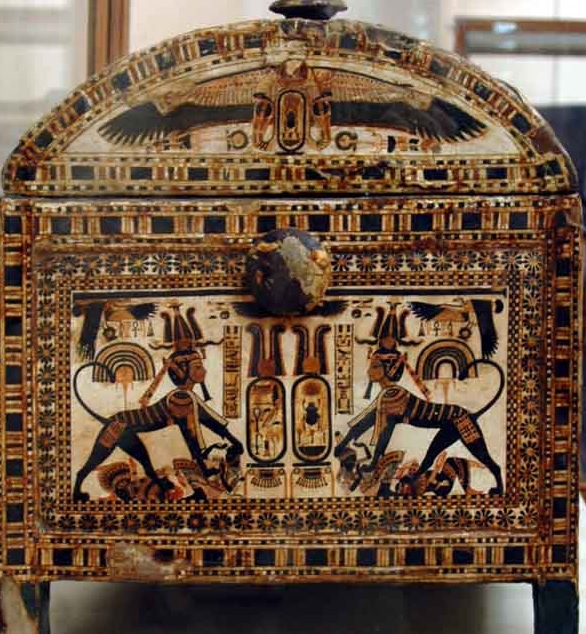
Text on the side of King Tutankhamun wooded chest from his tomb in the Valley of the Kings.
Perfect god, likeness of Ra (Re), who appears over foreign lands like the rising of Ra, who destroys this land of vile Kush, who shoots his arrows against the enemy.
Gay Robins, The Art of Ancient Egypt. British Museum Press. 1997 p 160.
If we are to make sense of the above then there are some fundamental questions that stand out here; questions such as, how can humans be considered as “perfect gods?” How on earth (literally) can humans be in the likeness of the sun? How can people physically appear over foreign lands?
Although the above and similar inscriptions are demoted to a world we little understand I will show how we can take the above totally at face value by simply invoking the GKS. With the GKS there will be no twisting, contorting or trying to bash square pegs in round holes. We will be able to take the sacred words of the Egyptians strictly as read, more importantly, exactly as understood by the Egyptians. Analysing the above text, line by line let me show you how.
Perfect god…
The four main perpetrators of chaos were Mars, Venus, Mercury and the Moon (Horus bodies) and in looming larger than the sun (Ra) as they repeatedly visited earth in a perennial cycle of death and rebirth as Egypt’s divine kings and queens. As with the solar deity Ra, they were naturally deemed “perfect gods.” Human beings, whether from ancient times or today’s modern world can never be deemed as “perfect gods.” This, I contend, is a ridiculous notion.
Likeness of Ra…
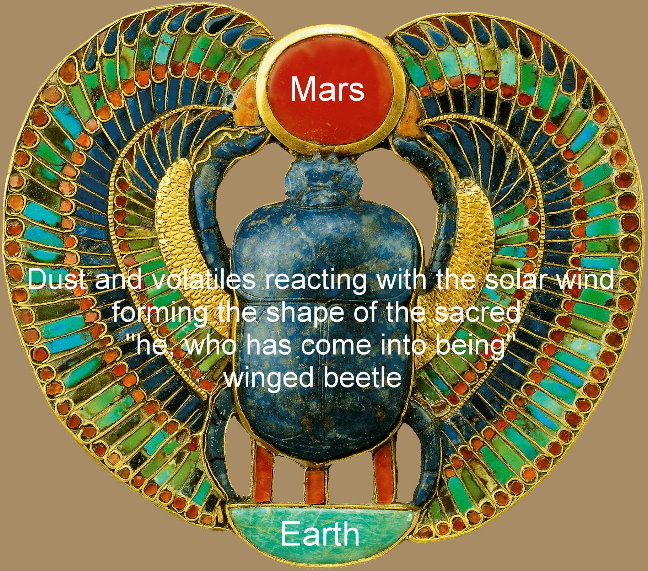
In my book An Ancient world in Chaos under the chapter ‘A Twilight World’ sub heading ‘Ra (Re) the sun god – the red Sun god,’ I show how the ancient Egyptians depicted our sun as a red disk because it appeared as a red disk! It appeared red because it was hazed behind 93 million miles (distance between the earth and the sun) of dust and debris (and dust in earth’s atmosphere), a natural consequence of cosmic chaos mostly ignored by other catastrophists.

The planets in chaos would also appear as large red orbs, in particular Mars, the ‘Red God of War,’ and as a result were given the common epithet “Likeness of Ra” (and offspring of Ra) This is the very reason why the red disk dominates Egyptian art (Please note when observing Egyptian art; the crescent Moon conspicuous by its absence).
“… who appears over foreign lands like the rising of Ra.
Could this be any more revealing? How can human beings ever appear over foreign lands like the rising sun? This is a clear and unequivocal description of a celestial body (Mars) appearing over foreign lands.
“… who destroys this land of vile Kush , who shoots his arrows against the enemy.
Since I identify Tutankhamun as a guise of Mars, this is Mars/Tutankhamun waging war against the evil dust and debris (asteroids, comets) that further threatened to blot out the red sun (Ra) and bring the whole world into chaos (Seth). The shooting of arrows is the skies of earth lighting up with trillions of shooting stars – the result of countless tons of dust and debris falling to earth and burning up in earth’s atmosphere.
By simply invoking the GKS and the notion that Tutankhamun (“Living Image of Amun“) was one of the many names given to Mars, let us now read the sacred text from the side of Tutankhamun’s wooden chest in its entirety and see how it makes perfect sense. Bearing in mind all I’ve done is add “Mars/Tutankhamun.”
Mars/Tutankhamun, perfect god, likeness of Ra, who appears over foreign lands like the rising of Ra, who destroys this land of vile Kush, who shoots his arrows against the enemy.
All kings were attributed similar characteristics.
The Sky God Horus
A brief word on the god Horus since all celestial ka kings were were the manifestation of Horus.
The astral monarchy were nurtured and protected by a number of cosmogonical deities as they moved back and forth to earth (Isis, Hathor, Osiris, Amun, etc.) and one of these was the hawk headed god Horus. Horus (Heru, “He who is above,” literally!) was the god of the sky, the embodiment of divine kingship and protector of the pharaoh. The kingly planets would become “Horus, god on earth” when reigning over earth and Osiris upon death (as they moved away and morphed into stars). It is no coincidence a soaring bird of prey was chosen for the role of universal guardian of the celestial kings. Simple formula for Horus: Horus = ruling pharaoh = planet ruing the sky above.
Tuthmosis I (“Born of the god Thoth” = Moon)
“… of his induction, his coronation as Lord of the Two Lands, to rule the circuit of the sun.
(Breasted, Vol 2 p29)
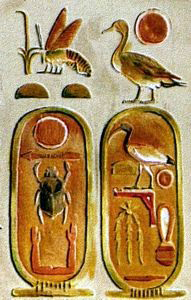
Planetary god kings traversed the same basic path or circle (around earth) of the sun (the plane of the ecliptic) – they were accordingly deemed as “Rulers of the Circuit of the Sun.” Such an exalted status was embodied in the Ancient Egyptian Cartouche which… “symbolized everything that the sun encircled and is thus an indication of the king’s rule of the cosmos” (Tour Egypt). Human beings do not rule the cosmos nor the circuit of Ra.
Year 2, second month of the first season, fifteenth day, under the majesty of Horus: Mighty Bull, Beloved of Maat; Favorite of the Goddesses: Shining in the Serpent-diadem, Mighty in Strength; Golden Horus: Godly in Years, Making hearts live; King of Upper and Lower Egypt : Okheperkere, who is given life; Son of Re: Thutmose forever, eternally.
Planetary bodies physically ‘shine’ not human beings, least not in the context presented above. The main perpetrators of chaos were Mars, Venus, Mercury and the Moon (Horus bodies). All would, at some point, incandess or ‘shine’ red with heat in the image of their father Ra (cause: tidal friction, internal convulsions or as in the case of Venus and the Moon, newly birthed bodies cooling down). This being the very reason why the red disk dominates Egyptian art.

In addition to generating their own light we also have reflected light from the Sun (the moon shines by reflected sunlight) – granting errant bodies the ability to ‘shine’ not only red but in a variety of colours including that of gold. Part of the royal titulary included the “Golden Horus” name which was simply written with the hieroglyph for gold (the glyph below the Horus figure in the image). Egyptologists are confused by its meaning citing perhaps it symbolized the kings divinity since gold was the flesh of the gods (Tour Egypt). I would suggest it originated from kingly bodies occasionally appearing gold or even more likely the result of Horus bodies ejecting golden bursts of material – as the glyph implies.
I will add my definition of the “Serpent-diadem” at a later date suffice to say it has to do with the solar wind stripping material from planetary bodies and creating a serpent-like crown, meanwhile here some more references to pharaonic planets in the act of “shining” (my bold emphasis).
He fixed my Horus upon the standard; he made me mighty as a mighty bull. He caused that I (Tuthmosis III) should shine in the midst of Thebes in this my name, Horus: Mighty Bull, Shining in Thebes.
“Horus: Mighty Bull, Shining in Thebes” is a very common epithet bestowed upon the Pharaohs.
As Horus, the astral Monarchy not only rose and set in the image of Ra, they also invoked the qualities of the “Mighty Bull” as they perpetually ploughed headlong through Egypt’s enemy (dust and debris, darkness).
What follows is Venus in the guise of Hatshepsut (“Foremost of the Noble Women”) also ‘shining’ and ‘illuminating’ just like the red sun.
Live the Horus: Wosretkew; Favorite of the Two Goddesses; Fresh in Years; Golden Horus: Divine of Diadems; splendid part of her father, Amon-Re, lord of heaven, who has not been far removed from the father of all gods, shining in brightness like the Horizon-God she illuminates like the sun, vivifying the hearts of the people, who is exalted in name so that it hath reached heaven.
(Breasted)
As above, all planetary bodies were the incarnation of Horus when ruling over earth and as large incandescent reddish orbs all would generate or reflect a certain amount of ‘shining light.’
Why are such ‘shining’ traits ignored by scholars? Am I the only one prepared to question these distinctly abnormal qualities apparently given to humans? Am I the only one listening the Ancient Egyptians? Even without the shining reference, the text is clearly alluding to celestial bodies.
Tuthmosis I (Moon)
Beautiful in years, who makes hearts live; Bodily Son of Re, Thutmose I Shining-in-Beauty.
“Beautiful in years,” – a reference to a human king wearing well perhaps? I strongly doubt it! Divine planetary bodies in the guise of kings and queens were “beautiful in years.”
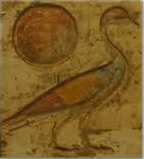
“Bodily son of Re….” – predominantly appearing as red disks all planetary kings (and queens) were considered to be directly related to the perennial red sun god Ra. This direct physical colour association led to the pharaohs adopting the title sa re which means “Son of Ra.’ Ra was perceived as father to all as it forever rose and set in an enduring and predictable fashion (chaos permitting of course). In contrast the divine monarchy were not so immortal. They lived and died to earth, many times changing location and attributes, hence the variety of pharaonic epithets bestowed upon them.
We can see the sa re, “Son of Ra” title in the following.
“Son of Ra, of his body, his beloved Tuthmosis, shining like Ra…..”
Again, incandescent bodies ‘shine’ not human beings!
Tuthmosis I (Moon) Universal triumph
I made the boundaries of Egypt as far as that which the sun encircles. I made strong those who were in fear; I repelled the evil from them. I made Egypt the superior of every land […] favorite of Amun, Son of Ra, of his body, his beloved Thutmose (I), Shining like Ra, beloved of Osiris, First of the Westerners; Great God, lord of Abydos, ruler of eternity; given life, stability, satisfaction, and health, while shining as King upon the Horus-throne of the living; and joy of his heart, together with his ka, like Re, forever.
(Breasted)
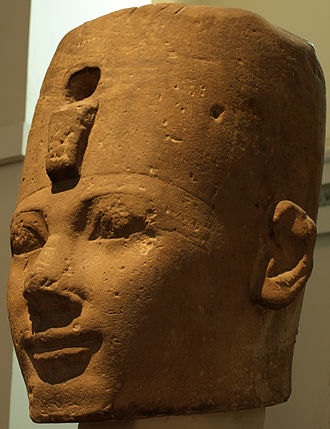
I contend the Moon was captured in orbit around the earth only 3,000 years ago and some of the kingly names given to the moon were Ahmose, Kamose and Tuthmosis which means “Born of the God Thoth.” As the Moon/Tuthmosis fell under the tidal force of earth, it entered into a highly elliptical and erratic orbit taking it far and wide across the heavens, or as the Egyptians put it, “as far as that which the sun encircles.”
In extending Egypt’s borders most (if not all) god king planets were physically observed battling up countless quantities of ‘evil’ space debris (asteroids, comets, boulders, rocks, etc.). These border skirmishes, wars and battles were the battles of the pharaohs, wars in the heavens. I discuss the abnormalities surrounding these apparent terrestrial battles (such as the lack of archaeological evidence of them ever having taken place here on Earth) further in my books (See GKS 7).
The following when read in a celestial context are as good as self-explanatory.
Accession and power of Tuthmosis I
… the Good God, who smites the Nubians, lord of might, who overthrows the Asiatics. He made his boundary as far as the Horns of the Earth.
Tuthmosis III (Moon) Coronation Inscription.
“… the splendors of his horizon. He made festive heaven and earth with his beauty; he received the great marvels; his rays were in the eyes of the people like the “Coming forth of Harakhte (Horus of the two horizons).
Tuthmosis/Moon, Ascent to heaven
He opened for me the doors of heaven; he opened the portals of the horizon of Re. I flew to heaven as a divine hawk, beholding his form in heaven; I adored his majesty —————- feast. I saw the glorious forms of the Horizon-God upon his mysterious ways in heaven.
His Coronation in Heaven
Ra himself established me, I was dignified with the diadems which were upon his head, his serpent-diadem, rested upon “my forehead he satisfied me with all his glories; I was sated with the counsels of the gods, like Horus, when he counted his body at the house of my father, Amun-Ra. I was presented with the dignities of a god, with ————- my diadems.
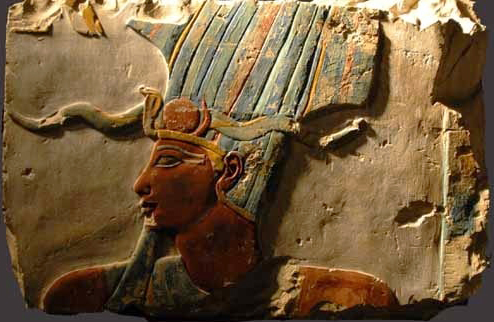
Hatshepsut (Venus)
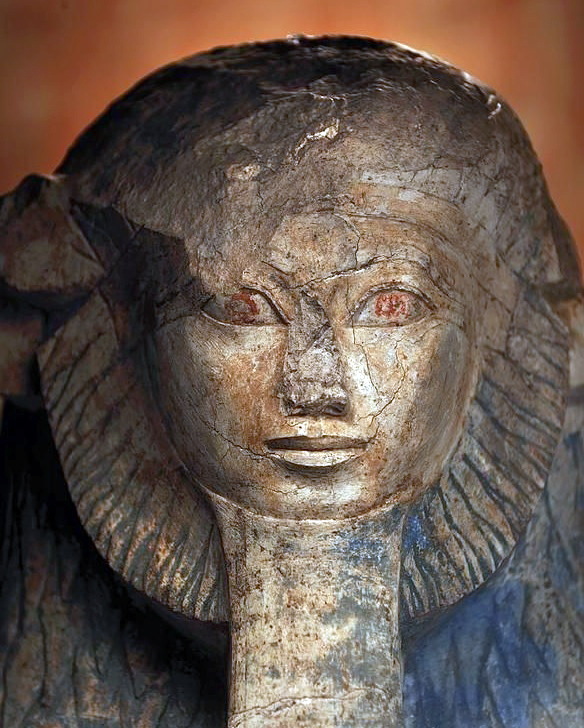
Her majesty grew beyond everything; to look upon her was more beautiful than anything; her ———– was like a god, her form was like a god, she did everything as a god, her splendor was like a god; her majesty was a maiden, beautiful, blooming, Buto in her time. She made her divine form to flourish, a favor of him that fashioned her.
They shall set thy boundary as far as the bredth of heaven, as far as the limits of the twelth hour of the night.
“… who shines like the sun, your sovereign, mistress of heaven. Thy name reaches as far as the circuit of heaven, the fame of Maatkare (Hatshepsut) encircles the sea.
A viceroy (name unknown) serving under Tuthmosis III (Moon).
King Tuthmosis III; he magnified me in the midst.
(Breasted Vol 2)
This, I believe is a small body possible orbiting around the Moon (a moon of the moon) and becoming lager i.e. “magnified” enough to a position worthy of mention. The Moon/Tuthmosis seemingly promoting a smaller body to the forefront to be considered as a viceroy of the astral god king. These astral connotational inscriptions are infinite; the reason being the ancient Egyptians knew exactly what they were doing with their ‘scared’ images and inscriptions, they were venerating their celestial god kings.
Ramesses II – one of the many guises of the warring Mars.

Ramesses/Mars – Mars a red disk, ‘offspring’ (sa ra) of the Red Sun
It will become unequivocal that a celestial body in the image of the Red Sun disk is being referred to here.
Source of all the following: Breasted Vol 3
(My parenthesis)
Fashioned by Ra.

Son of Ra, of his body.
Strong and right “like” Ra, chosen of Ra, beloved of Amun (the Aurora).
Thou art Ra, thy body is his body.
The Ra of rulers.
Lord of the Two Lands (heaven and earth).
Lo, I was Ra over the people..
Thou comest as living Re to the people: the southland and Northland are beneath thy feet (literally)… the duration of the all Lord when he rises….” (this is not a reference to Ramesses getting out of bed!)
Shining upon the Horus-throne of the living like his father, Ra, everyday.
They praised this Good God (Ramesses), magnifying his beauty in his presence.
… our king, our Lord, our Sun…
Who makes all men live when he has shone on them.
I came forth from Ra, although ye say, from Menmare (Seti/Mercury) who brought me up.
The All-Lord himself (Seti/Mercury) made me great, when I was a child, until I reigned. He gave me the land while I was in the egg…
I fashioned my father (Seti/Mercury) in gold anew, in the first year of my appearance.
… when thou risest to heaven, when thy beauty ascends to the horizon, the eyes see thy excellent deeds before gods and Men.
… Ra commanded that thou name should be known in every land.
… while I shone as Ra for the people.
… wherein thou risest like Ra at early morning.
Health shall be for thy limbs like those of Ra in heaven.
He has come forth from us (sky gods) to exercise the kingship of Ra.
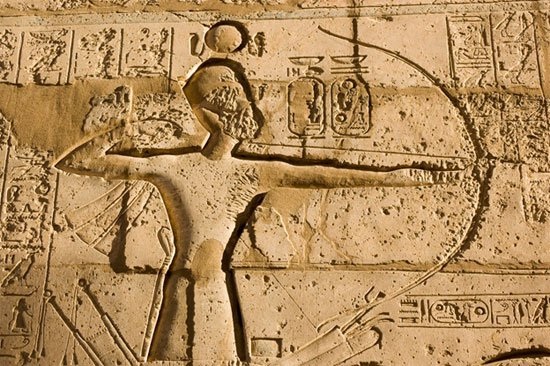
Gold come forth from the mountain of his name.
Lord of Diadems (polar aurora on Mars).
… that lo, his majesty was sitting upon a great throne of electrum, diademed with the double feathered crown (Mars exhibiting cometary plumes).
Thou art like Ra in all that thou doest…
For thou art Ra in limbs, and Khepri with his true form (Ramesses/Mars interacting with earth’s magnetic field).
Thy heart is made into the likeness of Ptah (Mars appearing with blue traits similar to the periodic appearance of the blue Jupiter/Ptah who, appearing as a large blue star was accordingly depicted wearing a blue skullcap).
When his majesty appeared like the rising of Ra, he assumed the adornments of his father, Montu” (warring aspect of the aurora).
I (Ptah/Jupiter) fashioned thee to rise like Ra, exalted before the gods, King Ramesses.
I (Ptah) have wrought thy limbs of electrum, thy bones of copper, thy organs of iron.
Heaven is given to thee and that which is in it: earth is led to thee and that which is in it.
When thou appearest every day, the captives of the two lands are brought to thee.
I (Ptah/Jupiter) have set thy might in every country, thy fear encircles the mountains, and the chiefs tremble at the mention of thee.
Lord of the form of Khepri, in whose limbs is Ra, who came forth from Ra.
While thou shinest upon the throne of Ra, every land is under thy feet, forever.
When thou (Ramesses/Mars) came forth upon earth, thou wast like Ra on high.
He (Ramesses) who spreads out his wings over his army.
Could the Ancient Egyptians make it any clearer?! Mars, many times adorned wings. See, The Winged Disk of Mars. See also The None Existent Battles of the Pharaohs.
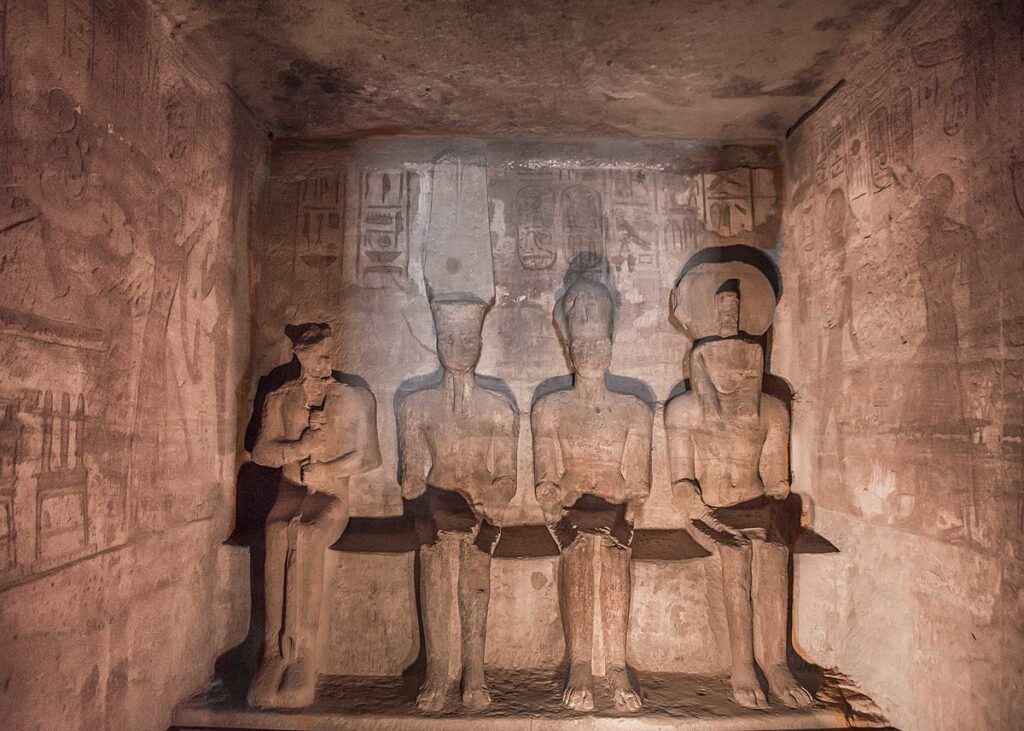
A statement of the Pharaohs power
Great Circle, the sea, the southern countries of the land of the Negro as far as the marsh lands, as far as the limits of the darkness, even to the four pillars of heaven.
Ramesses Valor
Live the Horus, Mighty Bull […] Ramesses (II), given life, forever, victorious king, valiant in the array, mighty, fighting myriads, overthrowing on his right, slaying on his left, like Set in his hour of rage, mighty Bull, shaking every opposing country with the victories of his sword; protector of Egypt, repulsing the Nine Bows. Every land fears before him; he is like a lion when he has tasted combat; no land can stand before him, King Ramesses; charging into the array, he turns not back, he is the first of the front rank of his army; valiant upon the steed, when he takes his bow, shooting on his right, and he who stands in the rear escapes him not; mighty in strength, with victorious arm, bearing the mace and the shield; crushing the chiefs beneath his feet; no one is able to sustain the combat, every country flees before him, the terror of him is like fire behind them.

Praise to thee! O valiant king of Egypt, Sun of the nine bows.
Thy father Amun (aurora) has decreed for thee that every land be beneath thy feet; he gives to thee south as well as the north, west east, and the isles in the midst of the sea.
House-of-Ramesses-in-the-House-of-Ra.
Lo, Amun came, with his son (Ramesses/Mars) before him, top the palace, to fix his diadem upon his head, to exalt the two plumes…. ” (Mars exhibiting cometary plumes, similar to Comet Venus).
Ramesses, who has made his monuments like the stars of heaven, whose works mingle with the sky, rejoicing over which Re rises in his house of millions of years. It was his majesty who beautified this monument for his father, in order to cause that his name should abide in the house of Ra.
Thothmosis I
His sword touches both ends of the earth.
http://www.reshafim.org.il/ad/egypt/history18-20.htm
Or, here.
The Poetical Stele of Thothmosis III

I have Thothmosis III down as a guise of the moon (Thothmosis means “Born of the Luna god Thoth”). As the moon slowly fell under the gravitational spell of earth it loomed large and was thus crowned pharaoh of Egypt. The capture of earth’s Moon was a chaotic process that saw Thothmosis/Moon engage in numerous sky wars. I would argue as you would expect and its the very reason why Thothmosis/Moon would go down in history as Egypt’s greatest warrior king – Egypt’s Napoleon. What follows is an almost verbatim third party reference to the ‘The Poetical Stele of Thothmosis III.’ It should be read with my astral definitions in mind. It will enable the stele to be taken at face value instead of invoking the absurd notion that everything in ancient Egypt was idealized. I have set in bold the most relevant bits.
(Link for the following here)
The inscription from the stele at the Cairo Museum (JE 3425) is presented as a speech of Amun (aurora). He welcomes the king calling Thothmosis “his son, his avenger” and embracing him. Amun states that he will give Thothmosis victory over all lands and, in fact has already made his previous victories possible. He tied up the Nubians and northerners (enemy in southern and northern skies) for the king to defeat and caused them to fall beneath his feet to be trampled. Amun (aurora) then relates his happiness at Thothmosis military victories before making a series of poetical statements each following the following structure.
With each line Amun gives Thothmosis dominance over a different part of the world and cause the people of each area to witness him as a particular phenomenon or creature each vividly described. Thus the people of Djahy in modern Lebanon see the king as radiant light shinning down upon them as the sun’s rays; while those in the Eastern Land and God’s land see the king as a shooting star that scatters its flame as fire. Those at the limits of the north were to see the king as falcon-winged, as one who could seize what he desires, while those who lived in the borderland and the Bedouin, would see the king as an Upper Egyptian jackal – a possessor of speed. Amun performs these wonders to Thothmosis because he in return does all that the god desires.
The full inscription can be read here.
Sound advice: The Ancient Records of Egypt by James Henry Breasted (and others) are to be read with my ideas in mind – it will allow the “sacred” inscriptions to be taken at face value as just they were intended.


